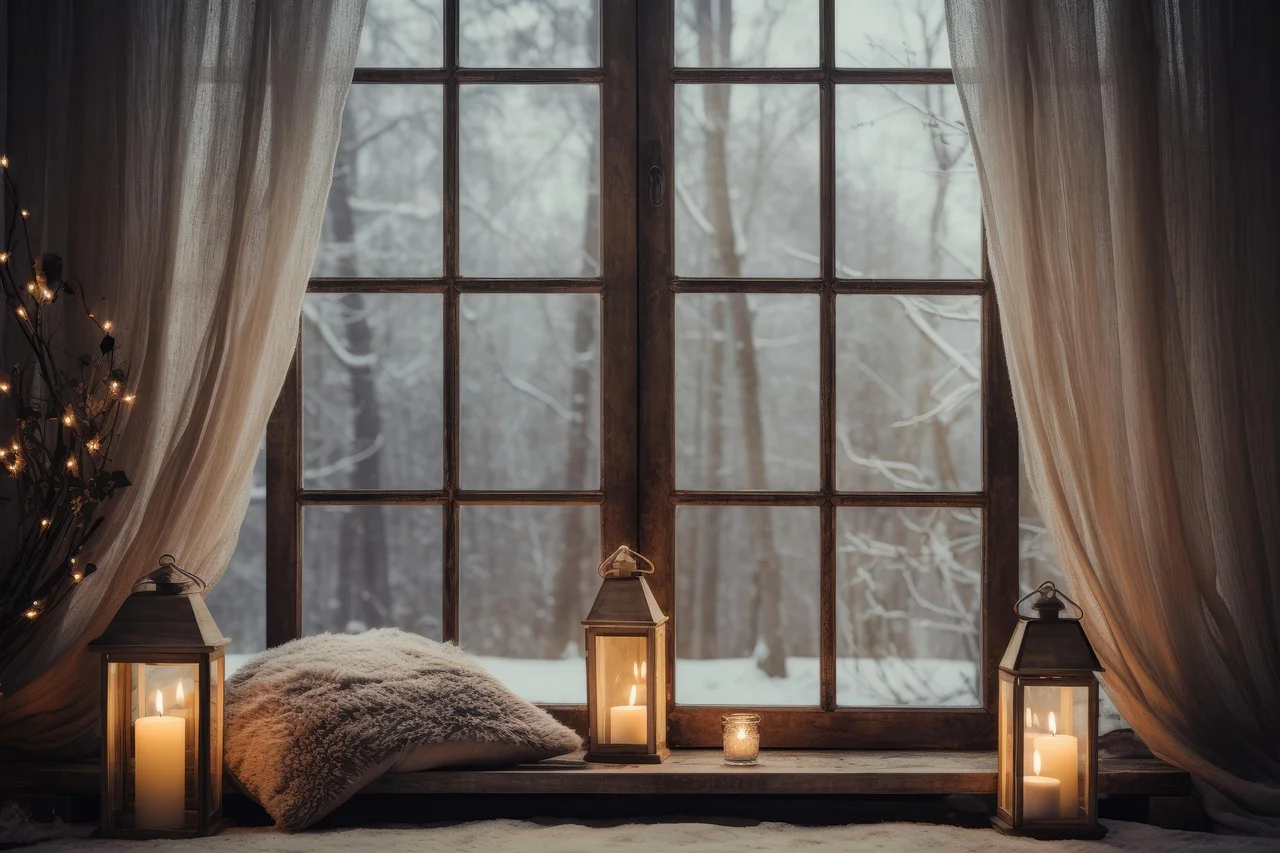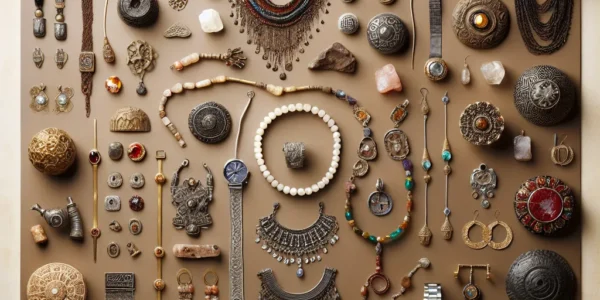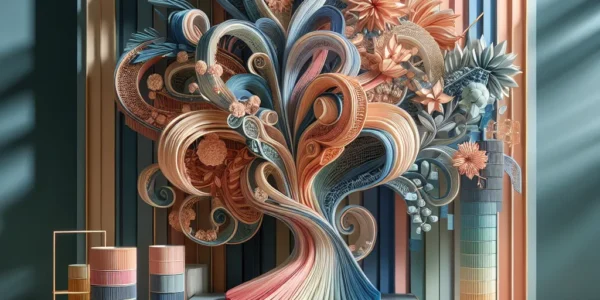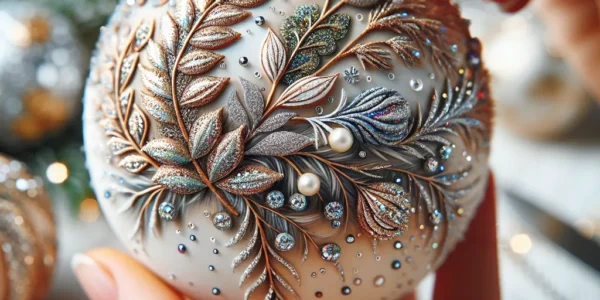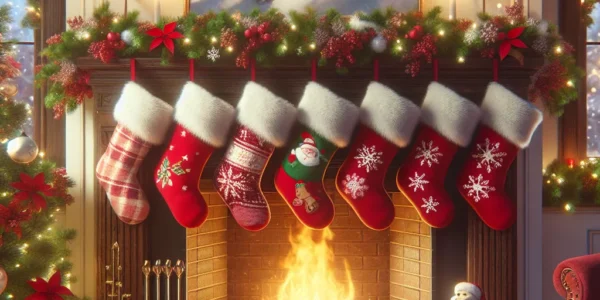The Evolution of Ornaments in Human History
The article delves into the profound significance of ornaments in prehistoric societies, emphasizing their role in indicating social status, conveying cultural symbolism, and enabling personal expression. It highlights how ornaments, such as jewelry and body decorations, were crucial in signaling status and hierarchy, carrying cultural and symbolic meanings, and serving as a form of personal and collective expression. The author paints a vivid picture of how early human communities utilized ornamentation as a language of its own, allowing for the expression of diverse meanings and emotions. Furthermore, the article explores the cultural influences on the development of ornaments, drawing attention to how different civilizations and cultural exchanges have shaped the evolution of ornamentation, reflecting the artistic expression and beliefs of diverse societies. The comprehensive coverage of the significance and cultural influences of ornaments in human history makes the article a compelling read for anyone interested in understanding the role of ornaments in shaping and reflecting prehistoric societies.
The Psychology of Ornamental Preferences
The article “The Influence of Culture on Ornamental Preferences” delves into the intricate relationship between culture and individuals’ ornamental tastes, emphasizing the impact of cultural norms, values, and traditions on the perception of ornamentation. It explores the concept of aesthetic symbolism and how different cultures attribute varied meanings to specific ornamental motifs and colors. Additionally, the article discusses how societal emphasis on aesthetic principles and cultural symbolism and heritage further shape ornamental preferences. Furthermore, it highlights the significance of understanding cultural influence for fields such as interior design, marketing, and cross-cultural psychology for creating more culturally sensitive and appealing designs. The piece on “Evolutionary Psychology and Aesthetic Preferences” underscores the role of evolutionary psychology in shaping aesthetic preferences, tracing them back to our evolutionary history and proposing that certain traits are favored due to their association with evolutionary advantages. It suggests that our aesthetic inclinations are rooted in adaptive behaviors and extend to environmental adaptation, providing insights into the underlying reasons for our preferences. Lastly, the segment on “Gender Differences in Ornamental Preference” presents compelling research insights into the divergence in aesthetic choices between genders, shedding light on a fascinating aspect of ornamental preferences. Together, these topics offer a comprehensive understanding of the multifaceted nature of ornamental preferences and the factors that influence them, making the article a compelling read for those interested in cultural psychology and aesthetics.
Unleash Your Creativity: Custom Ribbons and Personalized Decor Ideas
The article “Innovative Ways to Incorporate Custom Ribbons into Your Decor” presents versatile and creative uses for custom ribbons in home decor and special events. From adding personalized accents to table settings to creating unique wall decor and personalized gift wrapping, custom ribbons offer endless opportunities to elevate the visual appeal of any space. By incorporating custom ribbons, readers can unleash their creativity and personalize their decor, making it a valuable addition to any decor enthusiast’s toolkit. Furthermore, the article “Personalized Decor Ideas to Spark Your Creativity” emphasizes the power of personalized decor in expressing individual style and infusing living spaces with creativity. It suggests using custom ribbons in various ways, such as adding personalized messages or monograms, to instantly elevate the visual appeal of any space and make it truly unique. Whether for special events or everyday home decor, personalized decorations offer countless ways to unleash creativity and express individuality.
DIY Baubles: Creative Ideas for Handmade Holiday Ornaments
The article “Festive DIY Baubles: How to Make Your Own Holiday Ornaments” presents a comprehensive guide to creating personalized holiday decorations. It emphasizes the joy and charm in handcrafting ornaments, offering various creative techniques from using clear ornaments filled with glitter to crafting baubles from polymer clay or repurposed materials. The article highlights the rewarding nature of DIY holiday ornament making, encouraging readers to unleash their creativity to adorn their holiday decor with unique, handmade treasures. Additionally, the piece “Handmade Holiday Ornaments: Crafting Tips and Creative Ideas” delves into the incorporation of natural elements and textures, as well as personalized and themed ornaments, providing a wealth of ideas for those seeking to add a personal touch to their festive decorations. If you’re passionate about crafting or looking to elevate your holiday decor with individuality, this article invites you to explore the world of handmade ornaments for a fulfilling and delightful holiday season.
The Significance of Ornaments in Cultural Expression
The historical evolution of ornaments in cultural traditions encompasses a rich narrative of human history, from ancient civilizations to modern societies, portraying the adornments as symbols of identity, spirituality, and aesthetics. The usage of various materials and techniques, exemplified in ancient civilizations, the impact of cultural exchange and trade routes, and the industrial revolution’s influence on ornament production, all illustrate the dynamic evolution of cultural ornaments. In contemporary times, a resurgence of interest in traditional craftsmanship has led to a renaissance in creating culturally resonant ornaments, celebrating heritage and identity. Ornaments serve as enduring symbols of heritage and identity, enriching the diversity of global cultural traditions, with their deep-rooted symbolism and layers of meaning reflecting the cultural values and traditions of communities. This article delves into the profound significance of ornaments as cultural embodiments and invites readers to explore the intricate journey of ornaments in reflecting human expression and cultural diversity.
Must-Have Holiday Accessories for the Perfect Vacation
The article “Sun Protection Essentials for Your Next Getaway” emphasizes the importance of sun protection when planning a vacation, showcasing essential items such as sunscreen, sunglasses, wide-brimmed hats, and UPF clothing. It highlights their crucial role in protecting the skin from harmful UV rays and how they contribute to a safe and enjoyable holiday experience. Additionally, it encourages readers to prioritize their skin’s health while making the most of their vacation, promising to help them create lasting memories while staying safe in the sun. The piece acknowledges the significance of stylish swimwear and beachwear, providing insightful tips for both men and women on how to elevate their vacation wardrobe with trendy and comfortable options, as well as complementary accessories. It promises to help readers curate a collection of versatile pieces that will ensure they’re prepared for any beachside activities with comfort and style.
Mastering the Art of Archery: A Beginners Guide to Bows and Techniques
The article “Choosing the Right Bow for You” provides a comprehensive guide for beginners in the art of archery. It discusses the significance of selecting the appropriate bow type, such as the recurve bow or the compound bow, based on individual preferences and needs. Factors like draw weight, draw length, and handedness are highlighted as crucial considerations in choosing the right bow. The importance of comfort, suitability for personal goals, and physical abilities are emphasized in making the selection. Additionally, the piece gives an insight into “Understanding Archery Techniques and Form,” stressing the significance of proper stance, release, and aiming techniques. The article offers valuable insights for beginners and enthusiasts looking to establish a strong foundation in mastering archery, making it a must-read for anyone venturing into this fascinating sport.
Creative DIY Ideas for Decorating Christmas Baubles
The article delves into the whimsical world of unique hand-painted Christmas baubles and the creative opportunities they present for elevating holiday decor. It emphasizes the personalized touch and one-of-a-kind charm hand-painted baubles bring to festive decorations, offering readers an array of design possibilities that cater to different decor themes. The step-by-step guide encourages readers to unleash their artistic flair by using clear or plain baubles as their canvas and investing in high-quality paints and brushes to bring their visions to life. Additionally, it highlights the sentimental value of hand-painted baubles as heartfelt homemade gifts, tailored to reflect the recipient’s taste and style. Ultimately, the article paints a captivating picture of how hand-painted Christmas baubles can infuse holiday ambiance with artistry and individuality, making each ornament a cherished, artistic expression.
The Tradition of Christmas Socks: A Festive Must-Have
The article delves into the origins and evolution of the beloved Christmas tradition of hanging stockings, tracing it back to the story of St. Nicholas and highlighting its significance as a symbol of generosity and the spirit of giving. It emphasizes how the tradition has evolved, with families across cultures adding their own variations, and discusses the evolution of festive sock traditions, from simple stockings to personalized and decorative socks. Furthermore, it highlights the tradition of decorating with Christmas socks as a cherished practice that adds warmth and whimsy to homes during the holiday season. The article invites readers to explore the enchanting history and significance of Christmas stockings and how this enduring tradition continues to capture the magic and wonder of the Yuletide season.
The Surprising Health Benefits of Wearing Compression Socks
The article delves into the multifaceted benefits of compression socks, emphasizing how they contribute to improved circulation and reduced swelling in individuals. By applying gentle pressure to the lower legs, the socks aid in enhancing blood flow and preventing discomfort and swelling, addressing conditions such as varicose veins and edema. Moreover, the piece highlights the advantages for individuals with sedentary lifestyles, travelers, and athletes, in mitigating swelling and fatigue. Furthermore, it elucidates how compression socks can enhance athletic performance by facilitating blood flow, minimizing muscle soreness, and aiding in the rapid removal of lactic acid, promoting quicker recovery and consistent, high-intensity training. The overall implications underscore the significance of integrating compression socks into daily routines for improved well-being and athletic prowess.












